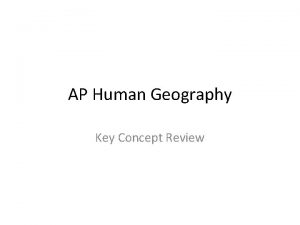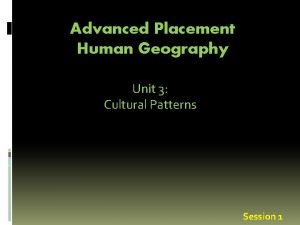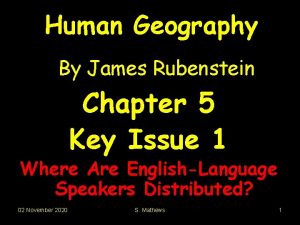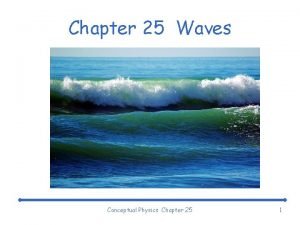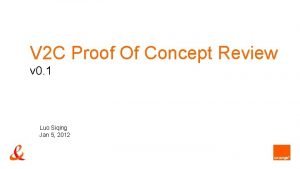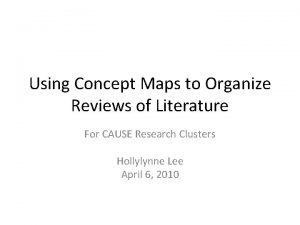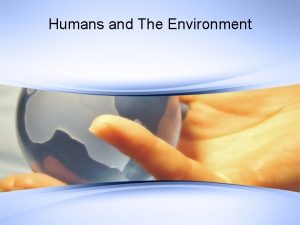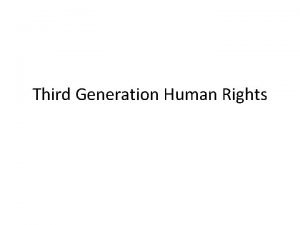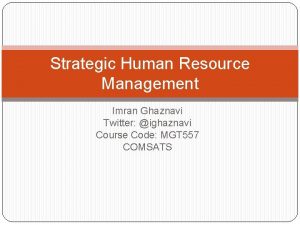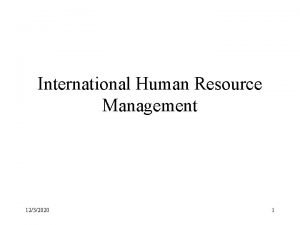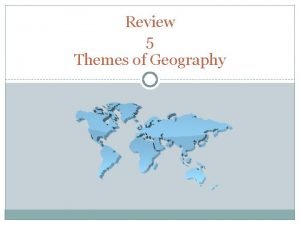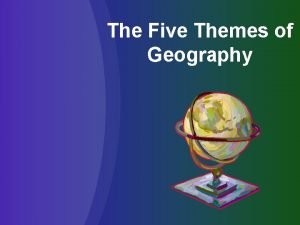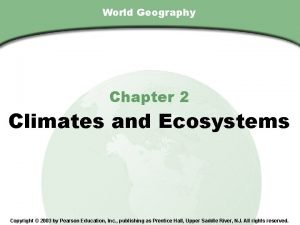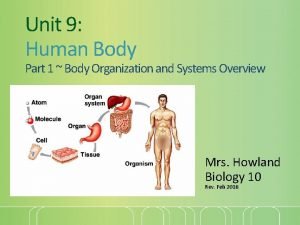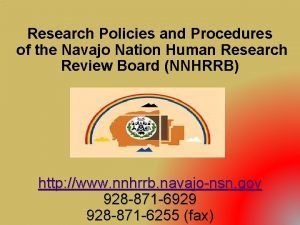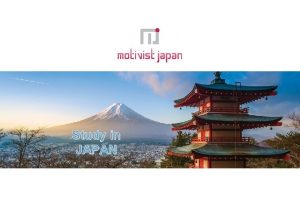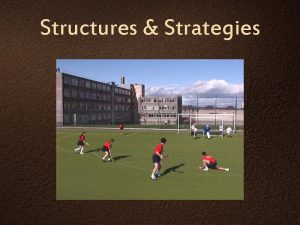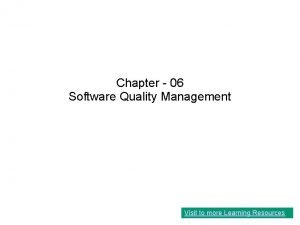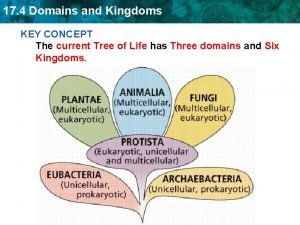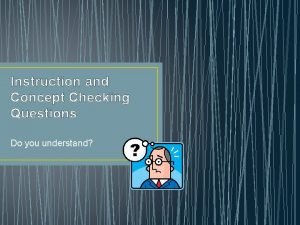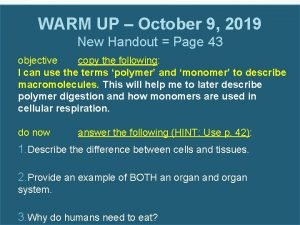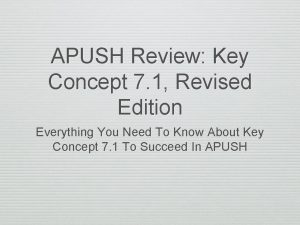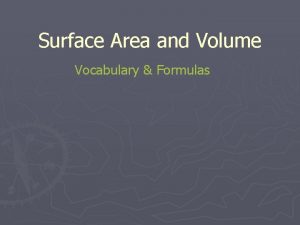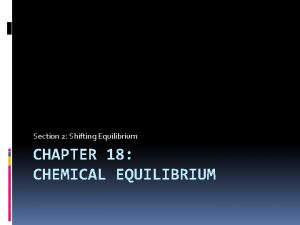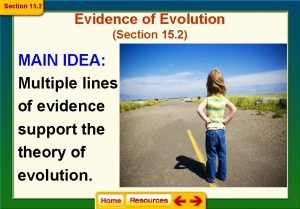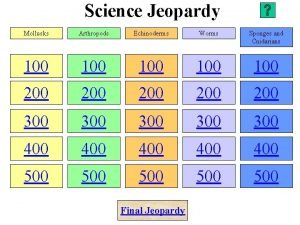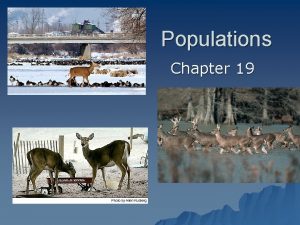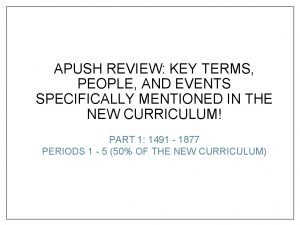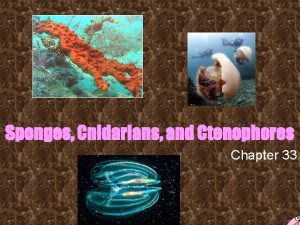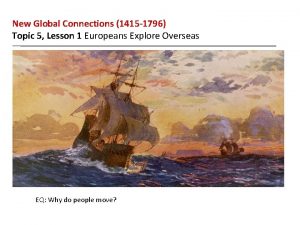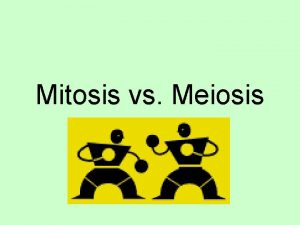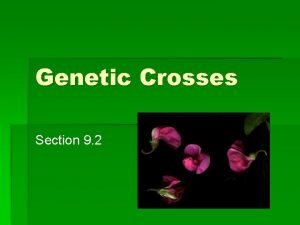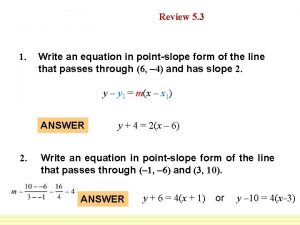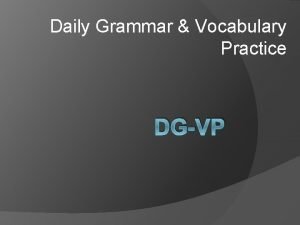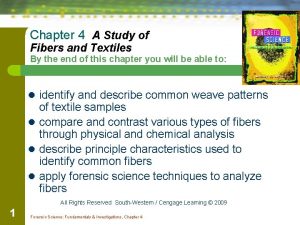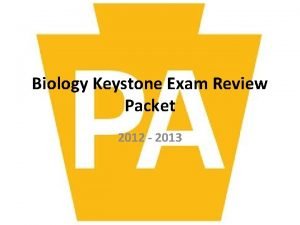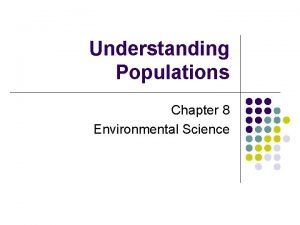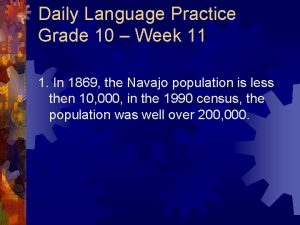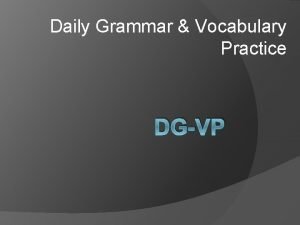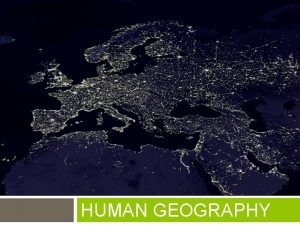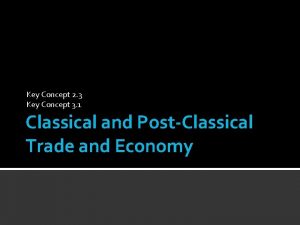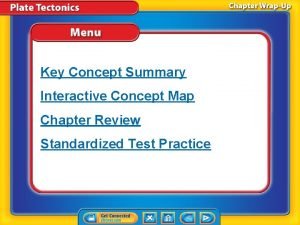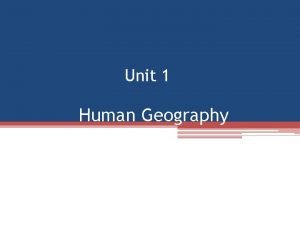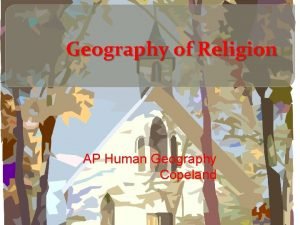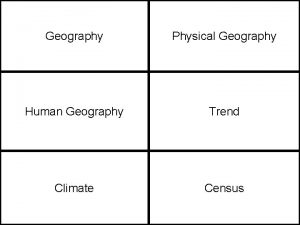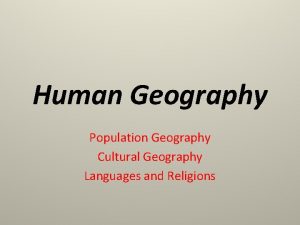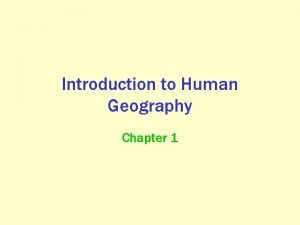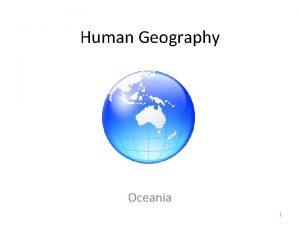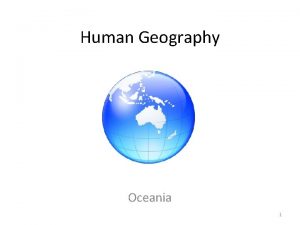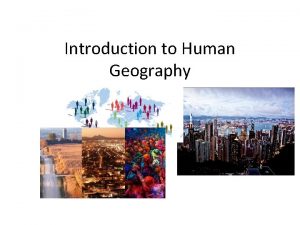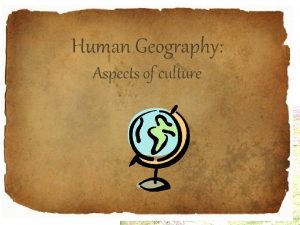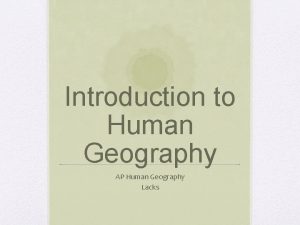AP Human Geography Key Concept Review Geography as



















































































- Slides: 83

AP Human Geography Key Concept Review

Geography as Field of Study • Geography – “geo” - “the earth” – “graphein” - “to write” • Cartography - art & science of map-making • Developed early by Greeks, Romans, Chinese, Arabs

Names in Geography • Eratosthenes - Greek scholar – Used geometry; accurately calculated circumference of earth • Ptolemy - Greek scholar – Developed global grid system forerunner to latitude & longitude • Idrisi - Arab geographer – Gathered maps, consulted mariners & travelers, went on scientific expeditions

Names in Geography • Immanuel Kant - defined geography as study of interrelated spatial patterns – Description & explanation of similarities & differences between regions • George Perkins Marsh – Focused on impact of human actions on natural environment • Carl Sauer - cultural landscapes – C. L. =product of interactions between humans & their environments

Types of Geography • Physical • Political • Human - Where are people? How are they alike and different? How do they interact? How do they change the natural landscapes, and how do they use them? • Urban • Environmental

Key Geographical Skills • Spatial Perspective - the way places and things are arranged and organized on earth’s surface • Absolute Location – Meridians, parallels, latitude, longitude – Greenwich, England • Relative Location

Use of Maps • Reference Material - tool for storing information • Communications/education - often thematic can explain spatial perspective to others - ex. Soil types • Contour Map - topography

Map Projections • Globe - only accurate representation of earth • “All maps lie flat and all flat maps lie. ” – distortion • Mercator - created for navigating ships across Atlantic Ocean; direction is true; distortion towards poles • Robinson - good projection for general use; distortion greatest at poles • Peters - keeps land masses equal in area; shapes distorted

Scale • Size of unit studied - local, regional, global? Ex. drought • Map Scale – Mathematical relationship between size of area on map & actual size on surface of earth – Large scale maps = more details • 1/24 – Small scale maps = less details • 1/24, 000

Time Zones • Use longitude to determine • 180 degrees east and west of prime meridian, runs through Greenwich, England (set by international agreement) • 15 degrees apart - 24 sections - 1 hour each • Encouraged by creation of railroads

“Place” • • • =unique location of a geographic feature Place name - toponyms Site Situation Absolute location Pattern = linear vs. centralized vs. random vs. grid/rectilinear – Ordinance of 1785

Regions • Formal/Uniform - similarities in physical or cultural features • Functional/Nodal - organized around nodes or cores – Core vs. periphery • Perceptual/Vernacular - places people believe to exist a part of their cultural identity

Space-Time Compression • Describes changes that rapid connections among places and regions have brought • First transportation and communication • Now television and computers • Impact of globalization

Geographic Technologies • GIS - Geographic Information System – computer system that can layer captured data • GPS - Global Positioning System – Uses series of satellites, tracking stations, and receivers to determine precise absolute locations on earth

Population Unit Two

Demography • Study of population • Population geography = number, composition, & distribution of human beings on earth’s surface • Follow growth and movement of population

Distribution, Density & Scale • Distribution - arrangement of locations on earth where people live – Dot maps • Population density - # of people in a given area of land – 90% of people live north of equator – More than 1/2 of all people live on 5% of land 9/10 on less than 20% – Most people live close to sea level – 2/3 of world lives within 300 miles of ocean

Density • Arithmetic (crude) – Total number of people divided by total land area • Physiological population – Total number of people divided by arable land

Carrying Capacity • Number of people an area can support on a sustained basis • Farmers using irrigation & fertilizers support more people • Industrial societies import raw materials & export manufactured goods

Population Pyramids • Represents a population’s age & sex composition • Factors affecting shape: – – – Health care War Availability of birth control Cultural values Level of economic development

Population Concentrations • • • 2/3 of world pop in 4 regions: East Asia - 1/5 of world Southeast Asia - 500 million Europe - primarily urban

Race and Ethnicity • Race - category composed of people who share biologically transmitted traits that members of a society consider important • Ethnicity - less based on physical characteristics & emphasizes a shared cultural heritage, such as language, religion, and customs • Important because people tend to live in areas with people of same race or ethnicity

Population Growth & Decline • Little pop growth until mid-18 th century • Agricultural or Neolithic Revolution – Until then, doubling rate was very long – Birth rates and death rates were high • 1750 Industrial Revolution - England – Population explosion – Doubling time has dropped fast

Theories of Population Growth • Zero population growth movement - goal to level off world’s pop growth to ensure earth can sustain its inhabitants • Thomas Malthus – Food growing arithmetically vs. pop growing exponentially – Neo-Malthusians, The Population Bomb, Paul Ehrlich, drove international efforts using birth control and family planning

The Vocabulary of Population Theory • • CBR TFR Demographic momentum CDR IMR NIR Life expectancy

Demographic Transition Theory • Stage 1 - pre-industrial, agrarian societies – High CBR and CDR • Stage 2 - industrialization – High CBR, lower CDR – By mid 19 th century - epidemiological revolution aka mortality revolution • Stage 3 - mature industrial economy – CBR drops, CDR low • Stage 4 - post-industrial economy – – CBR continues to fall and CDR low More women in workforce Children expensive Extensive education needed to fill post-industrial jobs

Population and Natural Hazards • Climate, drought, hurricanes, typhoons, tsunamis • Malthus’ “negative checks” - famine and disease • Globalization has increased spread of communicable diseases – – AIDS Asian bird flu Pandemic = widespread epidemic Swine flu

Population Policies • Expansive policies - like Mao Zedong’s • Restrictive policies – China - Deng Xiaoping • One child policy • Female infanticide – India - democracy’s problems • Family planning • Rural families • Indira Gandhi

International Policy Efforts • 1994 International Conference on Population and Development in Cairo, Egypt - agreed that improving the status of women is essential to population control • 1995 UN Fourth World Conference in Beijing, China agreed that women needed to control fertility allowing them to take advantage of educational and employment opportunities

Population Movement • Circulation = our short-term repetitive movements in our days • Migration = involves a permanent move to a new location, within a country or to another country • Demographic equation = summarizes population change over time in an area by combining natural change (death rate subtracted from birth rate) and the net migration • Emigration - migration FROM a location • Immigration - migration TO a location

Ravenstein’s Laws of Migration • British demographer • Wrote 11 migration laws • Most immigrants move short distance – Distance decay - decline of activity or function with increasing distance from point of origin – Step migration - long-distance migration done in stages – Intervening opportunities - those planning to go long distances find other opportunities before reaching final destination

Ravenstein’s Laws of Migration • Migrants moving longer distances tend to choose cities as destinations • Each migration flow produces a counter-flow; ex. When one group moves in to neighborhood, another group moves in • Families less likely to make international moves; single males more likely

Gravity Model • Inverse relationship between the volume of migration and the distance between source and destination • A large city has a greater gravitational pull than a small one, but it still tends to pull people that live closer rather than farther away

Reasons for Migration • Push factor = encourages people to move • Pull factor = attracts people to a region

Major Migrations at Different Scales • Asia, Latin America and Africa have net out-migration • North America. Europe, and Oceania jave net inmigration • Largest flows are: – Asia to Europe – Asia to North America – South America to North America

U. S. Immigration Patterns • Three Main Eras: – Initial settlement of colonies – Emigration from Europe – Immigration since 1945

Initial Settlement of Colonies About 1 million Europeans came before 1776 Another 1 million by 1840 Majority from Britain Others from Netherlands, Sweden, France, Germany, Iberian Peninsula • 18 th century - 400, 000 African slaves brought over • •

Emigration from Europe • 19 th-20 th century migration one of most significant in history • 75 million departed for Americas between 1835 -1935 • Largest number to USA • Three waves: – 1840 s-1850 s - 2 largest groups Irish & Germans – Late 1800 s - 1870 s-1890 s - 75% NW Europe; Germans & Irish continued & Scandinavians; pull factor Industrial Revolution – Early 1900 s- peak levels 1910; many from Southern and Eastern Europe, esp. Italy, Russia, Austria-Hungary

Immigration since 1945 • Restrictions against Asians lifted in 1960 s: China, Philippines, India, Vietnam • Many came as refugees • Many went to Canada • Another major source is Latin America with Mexico topping 8 million • 1986 Immigration Reform and Control Act government issued visas to several hundred thousand people who had previously entered illegally

Intraregional Migrations • Within USA, African-Americans began migrating from South to North during WWI and in the 1940 s; 1970 s countertrend of African Americans moving back South • Dislocation due to ethnic strife, war, or natural disasters – – South Asia - Afghanistan - Pakistan Southeast Asia - Vietnam - Cambodia Balkans - collapse of Yugoslavia Sub-Saharan Africa - Rwanda, Sudan

Migration Selectivity • =Tendency for certain types of people to move influenced by – 1. Age - young people, 18 -30 and their children – 2. Education - higher levels of education more likely to migrate long distances; follow one’s career in professions; danger of brain drains – 3. Kinship and friendship ties - chain migration; ethnic neighborhoods such as “Little Italies” and “Chinatowns”

Short Term Circulation & Activity Space • Activity Space - area in which an individual moves about as he or she pursues regular, dayto-day activities • Factors affecting activity spaces: – Age group - younger by foot/bicycle; older by car; retired activity space shrinks – Ability to travel - suburbs vs. city; LDC vs. MDC; income level – Opportunities to travel - self-sufficient families, poverty, & physical isolation reduce awareness space

Space-Time Prism • All people live within a space-time prism that sets the limits for their activities • They have only so much time to be mobile and their space is limited by their ability to move

Cultural Patterns and Processes Unit Three

Basic Definitions: • Cultural landscape - modification of the natural landscape by human activities • Cultural geography - transformation of the land ways that humans interact with the environment • Cultural ecology - studies relationship between natural environment and culture

Schools of Thought in Cultural Geography • Environmental determinism - physical environment actively shapes cultures so that human responses are almost completely molded by environment • Possibilism - cultural heritage is at least as important as physical environment in shaping human behavior • Environmental perception - emphasizes importance of human perception of environment rather than actual character of the land; shaped by culture • Cultural determinism - human culture ultimately more important than physical environment in shaping human actions

Concepts of Culture • Culture = mix of values, beliefs, behaviors, & material objects that together form a people’s way of life • Non-material culture = abstract concepts of values, beliefs, behaviors – Values = culturally-defined standards that guide way people assess desirability, goodness and beauty & serve as guidelines for moral living – Beliefs = specific statements people hold to be true, almost always based on values • Material Culture = includes wide range of concrete human creations = artifacts

Cultural Hearths • Areas where civilizations first began that radiated the customs, innovations, and ideologies that culturally transformed the world • Developed in SW Asia, North Africa, South Asia, East Asia - river valleys

Cultural Diffusion • Expansion diffusion – Contagious diffusion – Hierarchical diffusion – Stimulus diffusion • Relocation diffusion

• • • Acculturation Assimilation Transculturation Ethnocentrism Cultural relativism Syncretism

Language = key to culture • =systematic means of communicating ideas and feelings through the use of signs, gestures, marks, or vocal sounds • Also allows for continuity of culture (cultural transmission) • Writing invented 5000 years ago • Most people illiterate until 20 th century

Languages • Currently between 5000 -6000 languages • 10 languages spoken by 100+ million people: Spanish, Portuguese, Russian, German, Mandarin and Wu Chinese, English, Hindi, Bengali, Arabic, and Japanese • Linguistic fragmentation = many languages spoken especially by a relatively small number of people; ex. Eastern Europe

Language Families • Languages usually grouped into families with a shared, fairly distant origin • Indo-European family - languages spoken by half the world’s people, English most widely used; thought to be rooted in Black Sea area • Other families = Afro-Asiatic, Niger-Congo, Dravidian, American Indian

• Standard languages - recognized by govt and intellectual elite as norm for use in schools, govt, media, & other aspects of public life • Official languages - language endorsed & recognized by govt as one that everyone should know and use • Dialects - regional variants of a standard language • Isoglosses - boundaries within which words are spoken

• Bilingualism - ability to communicate in 2 languages • Multilingualism - ability to communicate in more than 2 languages • Pidgin - amalgamation of languages that borrows words from several • Creole - when a pidgin becomes the first language of a group of speakers • Lingua franca - established language that comes to be spoken & understood over a large area • Toponymy - study of place names – “town”, “ton”, “burgh”, or “ville” = town

Extinct Languages • Ex. Gothic, died out in 16 th century • Some organizations try to preserve endangered languages like European Union’s Bureau of Lesser Used Languages; ex. Welsh in Wales, Quecha in Peru

Religion • Varies in its cultural influence • Distinguished from other belief systems by emphasis on the sacred and divine • Explains anything that surpasses the limits of human knowledge • Affected most societies in history but today has been replaced in some places by new ideas – Humanism - ability of humans to guide their own lives – Marxism - communism

Religions • Universalizing Religions = Christianity, Islam, Buddhism; 60% of world’s religions • Ethnic Religions = appeal primarily to one group of people living in one place; 24% of world’s religions • 16% of world identifies with no religion

Divisions within religion • Branches - large, basic divisions within religion • Denominations - divisions of branches that unite local groups in a single administrative body • Sects - relatively small groups that do not affiliate with the more mainstream denominations

Christianity • 2 billion followers • Most widespread distribution • Predominant religion in North & South America, Europe & Australia • 3 major branches: – Roman Catholic - 50% – Protestant - 25% – Eastern Orthodox - 10% • Remaining 15% cannot be categorized into the 3 main branches

Religion in the United States • Over 50% Protestant • 25% Catholic • 2% Jewish • What about the Mormons?

Islam • 1. 3 billion adherents • Predominant in Middle East from North Africa to Central Asia • About half of world’s Muslims live in Indonesia, Pakistan, Bangladesh and India • Growing faster than Christianity • 7 -10 million Muslims in USA • Youngest of world religions

Divisions of Islam • Sunni - 83% of Muslims; Indonesia largest concentration • Shiite - 16% of Muslims; concentrated in Iran, Pakistan, Iraq, Turkey, Azerbaijan, Afghanistan and Yemen • Split occurred over the rightful successor of Muhammad

Buddhism • 365 million followers • Began on Indian subcontinent • Diffused through Silk Road and water routes across Indian Ocean to East and Southeast Asia

3 Main Branches of Buddhism • Mahayana - 56% - “Big Wheel” - East Asia • Theraveda - 38% - stricter adherence to Buddha’s teachings - Southeast Asia • Tantrayana - 6% - Tibet and Mongolia • Accurate count difficult because eastern religions don’t require followers to identify with one religion

Other Universalizing Religions • Sikhism - 21 million in Punjab region of India; combo Hinduism and Islam; founder Guru Nanak • Baha’i - founded in 1844, most in Iran, viewed by some Shiite Muslims as heretics, believe in a different prophet

Ethnic Religions • • • Hinduism Confucianism Daoism Shintoism Judaism Shamanism

Spatial Impact • Large cities - tallest, most centralized & elaborate buildings are often religious structures • Churches, mosques, temples, synagogues, pagodas • Bodhi trees in Buddhist areas • How religions dispose of the dead

Taboo? • - defined as: – a restriction on behavior imposed by a social custom. – COMMON TABOO ITEMS • FOODS, RELATIONSHIPS, LANGUAGE, OBSCENITY, ETC. . • RESEARCH- TABOO’S

Why Is Folk Culture Clustered? – Folk housing and the environment • Housing = a reflection of cultural heritage, current fashion, function, and the physical environment • most common building materials = wood &brick • Minor differences in the environment can produce very different house styles

Hearths of House Types Figure 4 -12

U. S. House Types (1945– 1990) Figure 4 -16

House Types in Four Western Chinese Communities Figure 4 -9

Popular & Folk Culture • Folk = traditionally practiced by small, homogeneous groups living in isolated rural areas • Popular = found in large heterogeneous societies that are bonded by a common culture despite the many differences among the people that share it

Folk Culture Controlled by tradition Resistant to change Self-sufficient Example - Amish Relatively isolated Usually agricultural with limited technology Ex. Dutch wearing wooden shoes to adapt to working in wet fields below sea level • Ex. Hindu taboos against eating beef • Housing styles - based on environment materials • •

Why Is Folk Culture Clustered? – Folk housing and the environment • Housing = a reflection of cultural heritage, current fashion, function, and the physical environment • most common building materials = wood &brick • Minor differences in the environment can produce very different house styles

Hearths of House Types Figure 4 -12

U. S. House Types (1945– 1990) Figure 4 -16

House Types in Four Western Chinese Communities Figure 4 -9

Folk Music • North American folk music began as immigrants carried their songs to the New World but became Americanized and then new songs about American experiences • Regions – Northern song section – Southern and Appalachian song area – Western song area – Black Song Style Family

Popular Culture • Primarily urban based • General mass of people conforming to and then abandoning ever-changing cultural trends • Breeds homogeneity • Pop culture takes on a national character • Globalization of pop culture has caused resentment

Environmental impact of popular culture • Uniform landscapes - fast food restaurants, chain hotels, gas stations, convenience stores; designed so residents and visitors immediately recognize purpose of building or name of company • Increased demand for natural resources - fads demand animal skins; consumption of food not efficient to produce (ex. 1 lb beef requires animal consuming 10 lbs grain; ratio for chicken 1 to 3) • Pollution - high volume of wastes

Cultural Landscape = Cultural Identity • Landscapes & values = Native Americans vs. Europeans • Landscapes & identity = people express culture by transforming elements into symbols like flags, slogans, religious icons, landscaping and house styles – Can clash like Muslim practice of never depicting Allah or Muhammad in drawings clashed with western freedom of press with Danish cartoon in 2005 • Symbolic landscapes = all landscapes are symbolic signs and images convey messages
 Describing and measuring motion
Describing and measuring motion Syncretism definition ap human geography
Syncretism definition ap human geography Chapter review motion part a vocabulary review answer key
Chapter review motion part a vocabulary review answer key Ap human geography unit 3 review
Ap human geography unit 3 review Ap human geography political geography frq
Ap human geography political geography frq 5 themes of geography ap human geography
5 themes of geography ap human geography Stateless nation
Stateless nation Gni definition ap human geography
Gni definition ap human geography Key concept summaries answer key
Key concept summaries answer key Key concept builder lesson 1 what are waves answer key
Key concept builder lesson 1 what are waves answer key Chapter 5 key issue 1 ap human geography
Chapter 5 key issue 1 ap human geography Key partners adalah
Key partners adalah Contoh bisnis model canvas makanan pdf
Contoh bisnis model canvas makanan pdf The real self vs ideal self
The real self vs ideal self Contoh marketing concept
Contoh marketing concept Electric forces and fields concept review
Electric forces and fields concept review Conceptual physics chapter 25
Conceptual physics chapter 25 Proof of concept review
Proof of concept review Concept map for literature review
Concept map for literature review Ap gov review final exam review
Ap gov review final exam review Nader amin-salehi
Nader amin-salehi What is inclusion and exclusion
What is inclusion and exclusion Narrative review vs systematic review
Narrative review vs systematic review Concept of human values
Concept of human values Environment concept map
Environment concept map First generation rights meaning
First generation rights meaning Explain the concept of human resource management
Explain the concept of human resource management Ihrm definition
Ihrm definition World geography spring final review
World geography spring final review Relative location of taj mahal
Relative location of taj mahal 5 themes of geography review game
5 themes of geography review game World geography chapter 2 review answers
World geography chapter 2 review answers Body organization
Body organization Pltw human body systems final exam review
Pltw human body systems final exam review Navajo irb
Navajo irb Language academy
Language academy Navajo nation human research review board
Navajo nation human research review board What is a key concept
What is a key concept Concept map for igneous rocks
Concept map for igneous rocks Concept covered energy flow answer key
Concept covered energy flow answer key Chapter 34 circulation in humans concept mapping answer key
Chapter 34 circulation in humans concept mapping answer key Chapter 30 fishes and amphibians worksheet answers
Chapter 30 fishes and amphibians worksheet answers Six sigma methodology defines three core steps
Six sigma methodology defines three core steps Chapter 17 section 3 domains and kingdoms
Chapter 17 section 3 domains and kingdoms Photosynthesis concept map answer key
Photosynthesis concept map answer key Examples of ccqs
Examples of ccqs Chapter 34 section 1 the circulatory system
Chapter 34 section 1 the circulatory system Macromolecule concept map answer key
Macromolecule concept map answer key Seed and key concept
Seed and key concept Logical view of data in relational database model
Logical view of data in relational database model Federal deposit insurance corporation apush
Federal deposit insurance corporation apush Classifying triangles maze answer key
Classifying triangles maze answer key Rectangular prism definition
Rectangular prism definition Spanish 1 review packet answer key
Spanish 1 review packet answer key Chapter 18 review chemical equilibrium
Chapter 18 review chemical equilibrium Section 15-2 review theories of evolution
Section 15-2 review theories of evolution Section 38-1 review echinoderms answer key
Section 38-1 review echinoderms answer key Comic relief romeo and juliet
Comic relief romeo and juliet Section 19-1 review understanding populations answer key
Section 19-1 review understanding populations answer key Plate tectonics test review answer key
Plate tectonics test review answer key 5 a day language review week 25
5 a day language review week 25 Modern chemistry textbook answers chapter 9
Modern chemistry textbook answers chapter 9 Modern chemistry chapter 12
Modern chemistry chapter 12 Hydrology review answer key
Hydrology review answer key Genetics vocabulary review answer key
Genetics vocabulary review answer key Holothuroidea
Holothuroidea Chemistry review answer key
Chemistry review answer key Chapter 18 review chemical equilibrium section 3 answer key
Chapter 18 review chemical equilibrium section 3 answer key Biology keystone review packet answer key
Biology keystone review packet answer key Grandfather clause apush
Grandfather clause apush Cnidarians and sponges
Cnidarians and sponges Romeo and juliet timeline answer key
Romeo and juliet timeline answer key New global connections test answers
New global connections test answers Mitosis and meiosis reflection
Mitosis and meiosis reflection Section 9-2 review genetic crosses answer key
Section 9-2 review genetic crosses answer key Daily language review week 16 answer key
Daily language review week 16 answer key How to turn standard form into slope intercept
How to turn standard form into slope intercept Dgp week 14 answer key
Dgp week 14 answer key Chapter 4 study of fibers and textiles
Chapter 4 study of fibers and textiles Biology keystone review packet answer key
Biology keystone review packet answer key Environmental science chapter 8 review answer key
Environmental science chapter 8 review answer key Dgp week 11
Dgp week 11 My friend jose will travel here on tuesday
My friend jose will travel here on tuesday Honors chemistry unit 4 review answers
Honors chemistry unit 4 review answers

